
Rabbit Anti-FOXP3 antibody
Forkhead box protein P3; forkhead box P3; Scurfin; Forkhead box protein P3, C-terminally processed; Forkhead box protein P3 41 kDa form; JM2; AIID; IPEX; PIDX; XPID; DIETER; FOXP3_HUMAN;
View History [Clear]
Details
Product Name FOXP3 Chinese Name 叉头蛋白P3抗体 Alias Forkhead box protein P3; forkhead box P3; Scurfin; Forkhead box protein P3, C-terminally processed; Forkhead box protein P3 41 kDa form; JM2; AIID; IPEX; PIDX; XPID; DIETER; FOXP3_HUMAN; literatures Research Area transcriptional regulatory factor Immunogen Species Rabbit Clonality Polyclonal React Species Human, Mouse, Rat, (predicted: Dog, Pig, Cow, Horse, Rabbit, Sheep, Guinea Pig, ) Applications WB=1:500-2000 ELISA=1:5000-10000 IHC-P=1:100-500 IHC-F=1:100-500 Flow-Cyt=0.2ug/Test ICC=1:100 IF=1:100-500 (Paraffin sections need antigen repair)
not yet tested in other applications.
optimal dilutions/concentrations should be determined by the end user.Theoretical molecular weight 47kDa Cellular localization The nucleus Form Liquid Concentration 1mg/ml immunogen KLH conjugated synthetic peptide derived from human FoxP3: 331-431/431 Lsotype IgG Purification affinity purified by Protein A Buffer Solution 0.01M TBS(pH7.4) with 1% BSA, 0.03% Proclin300 and 50% Glycerol. Storage Shipped at 4℃. Store at -20 °C for one year. Avoid repeated freeze/thaw cycles. Attention This product as supplied is intended for research use only, not for use in human, therapeutic or diagnostic applications. PubMed PubMed Product Detail The protein encoded by this gene is a member of the forkhead/winged-helix family of transcriptional regulators. Defects in this gene are the cause of immunodeficiency polyendocrinopathy, enteropathy, X-linked syndrome (IPEX), also known as X-linked autoimmunity-immunodeficiency syndrome. Alternatively spliced transcript variants encoding different isoforms have been identified. [provided by RefSeq, Jul 2008].
Function:
Probable transcription factor. Plays a critical role in the control of immune response.
Subunit:
Interacts with IKZF3.
Subcellular Location:
Nucleus (Potential).
Post-translational modifications:
Acetylation on lysine residues stabilizes FOXP3 and promotes differentiation of T-cells into induced regulatory T-cells (iTregs) associated with suppressive functions. Deacetylated by SIRT1.
DISEASE:
Defects in FOXP3 are the cause of immunodeficiency polyendocrinopathy, enteropathy, X-linked syndrome (IPEX) [MIM:304790]; also known as X-linked autoimmunity-immunodeficiency syndrome. IPEX is characterized by neonatal onset insulin-dependent diabetes mellitus, infections, secretory diarrhea, trombocytopenia, anemia and eczema. It is usually lethal in infancy.
Similarity:
Contains 1 C2H2-type zinc finger.
Contains 1 fork-head DNA-binding domain.
SWISS:
Q9BZS1
Gene ID:
50943
Database links:Entrez Gene: 50943 Human
Entrez Gene: 20371 Mouse
Omim: 300292 Human
SwissProt: Q9BZS1 Human
SwissProt: Q99JB6 Mouse
Unigene: 247700 Human
Unigene: 182291 Mouse
Product Picture
Spleen (Rat) Lysate at 40 ug
Primary: Anti-FoxP3 (SL10211R) at 1/300 dilution
Secondary: IRDye800CW Goat Anti-Rabbit IgG at 1/20000 dilution
Predicted band size: 47 kD
Observed band size: 47 kD
Protein: Raji(human) lysates at 40ug;
Primary: rabbit Anti-FoxP3 (SL10211R) at 1:300;
Secondary: HRP conjugated Goat-Anti-rabbit IgG(SL0295G-HRP) at 1: 5000;
Predicted band size:47 kD
Observed band size:47 kDSample:
Thymus (Mouse) Lysate at 40 ug
Primary: Anti-FoxP3 (SL10211R) at 1/300 dilution
Secondary: IRDye800CW Goat Anti-Rabbit IgG at 1/20000 dilution
Predicted band size: 47 kD
Observed band size: 47 kD
Sample:
Lane 1: PBMC (Mouse) Lysate at 40 ug
Lane 2: Thymus (Mouse) Lysate at 40 ug
Lane 3: Spleen (Mouse) Lysate at 40 ug
Lane 4: Thymus (Rat) Lysate at 40 ug
Primary: Anti-FoxP3 (SL10211R) at 1/1000 dilution
Secondary: IRDye800CW Goat Anti-Rabbit IgG at 1/20000 dilution
Predicted band size: 43/45 kD
Observed band size: 43/45 kD
Sample:
U937 Cell (Human) Lysate at 30 ug
Primary: Anti-FoxP3 (Bs-10211R) at 1/300 dilution
Secondary: IRDye800CW Goat Anti-Rabbit IgG at 1/20000 dilution
Predicted band size: 47 kD
Observed band size: 48 kD
Tissue/cell: Rat brain tissue; 4% Paraformaldehyde-fixed and paraffin-embedded;
Antigen retrieval: citrate buffer ( 0.01M, pH 6.0 ), Boiling bathing for 15min; Block endogenous peroxidase by 3% Hydrogen peroxide for 30min; Blocking buffer (normal goat serum,C-0005) at 37℃ for 20 min;
Incubation: Anti-FoxP3 Polyclonal Antibody, Unconjugated(SL10211R) 1:500, overnight at 4°C, followed by conjugation to the secondary antibody(SP-0023) and DAB(C-0010) staining
Tissue/cell: rat spleen; 4% Paraformaldehyde-fixed and paraffin-embedded;
Antigen retrieval: citrate buffer ( 0.01M, pH 6.0 ), Boiling bathing for 15min; Block endogenous peroxidase by 3% Hydrogen peroxide for 30min; Blocking buffer (normal goat serum,C-0005) at 37℃ for 20 min;
Incubation: Anti-FoxP3 Polyclonal Antibody, Unconjugated(SL10211R) 1:200, overnight at 4°C, followed by conjugation to the secondary antibody(SP-0023) and DAB(C-0010) staining
Blank control: Mouse spleen.
Primary Antibody (green line): Rabbit Anti-FoxP3/PE Conjugated antibody (SL10211R-PE)
Dilution: 0.2μg /10^6 cells;
Isotype Control Antibody (orange line): Rabbit IgG-PE .
Protocol
The cells were fixed with 4% PFA (10min at room temperature)and then permeabilized with 90% ice-cold methanol for 20 min at-20℃. The cells were then incubated in 5% BSA to block non-specific protein-protein interactions for 30 min at room temperature. The cells were stained with Primary Antibody for 30 min at room temperature. Acquisition of 20,000 events was performed.Blank control: MCF7.
Primary Antibody (green line): Rabbit Anti-FoxP3 antibody (SL10211R)
Dilution: 2μg /10^6 cells;
Isotype Control Antibody (orange line): Rabbit IgG .
Secondary Antibody : Goat anti-rabbit IgG-AF647
Dilution: 1μg /test.
Protocol
The cells were fixed with 4% PFA (10min at room temperature)and then permeabilized with 90% ice-cold methanol for 20 min at-20℃.The cells were then incubated in 5%BSA to block non-specific protein-protein interactions for 30 min at room temperature .Cells stained with Primary Antibody for 30 min at room temperature. The secondary antibody used for 40 min at room temperature. Acquisition of 20,000 events was performed.Blank control: MCF7.
Primary Antibody (green line): Rabbit Anti-FoxP3 antibody (SL10211R)
Dilution: 2μg /10^6 cells;
Isotype Control Antibody (orange line): Rabbit IgG .
Secondary Antibody : Goat anti-rabbit IgG-AF647
Dilution: 1μg /test.
Protocol
The cells were fixed with 4% PFA (10min at room temperature)and then permeabilized with 90% ice-cold methanol for 20 min at-20℃.The cells were then incubated in 5%BSA to block non-specific protein-protein interactions for 30 min at room temperature .Cells stained with Primary Antibody for 30 min at room temperature. The secondary antibody used for 40 min at room temperature. Acquisition of 20,000 events was performed.Blank control (Black line):Mouse spleen (Black).
Primary Antibody (green line): Rabbit Anti-FoxP3 antibody (SL10211R)
Dilution: 3μg /10^6 cells;
Isotype Control Antibody (orange line): Rabbit IgG .
Secondary Antibody (white blue line): Goat anti-rabbit IgG-PE
Dilution: 1μg /test.
Protocol
The cells were fixed with 4% PFA (10min at room temperature)and then permeabilized with 90% ice-cold methanol for 20 min at room temperature. The cells were then incubated in 5%BSA goat serum to block non-specific protein-protein interactions for 15 min at room temperature .Cells stained with Primary Antibody for 30 min at room temperature. The secondary antibody used for 40 min at room temperature. Acquisition of 20,000 events was performed.
Partial purchase records(bought amounts latest0)
No one bought this product
User Comment(Total0User Comment Num)
- No comment
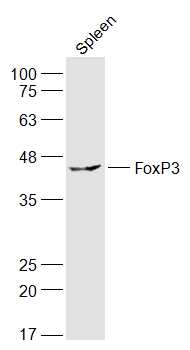
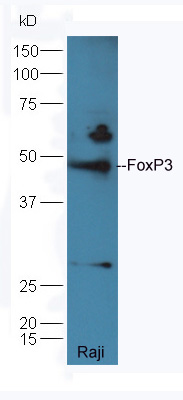
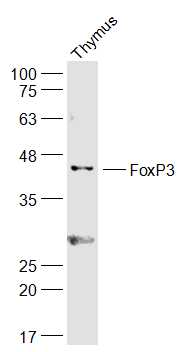
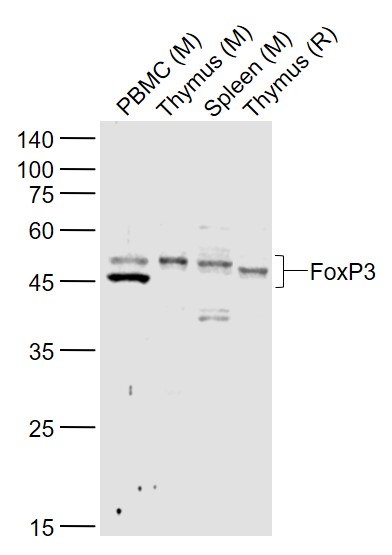
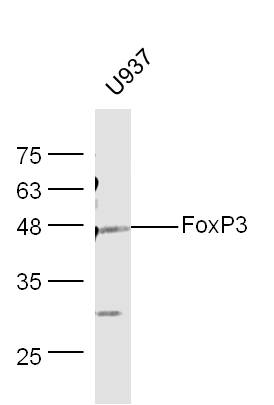
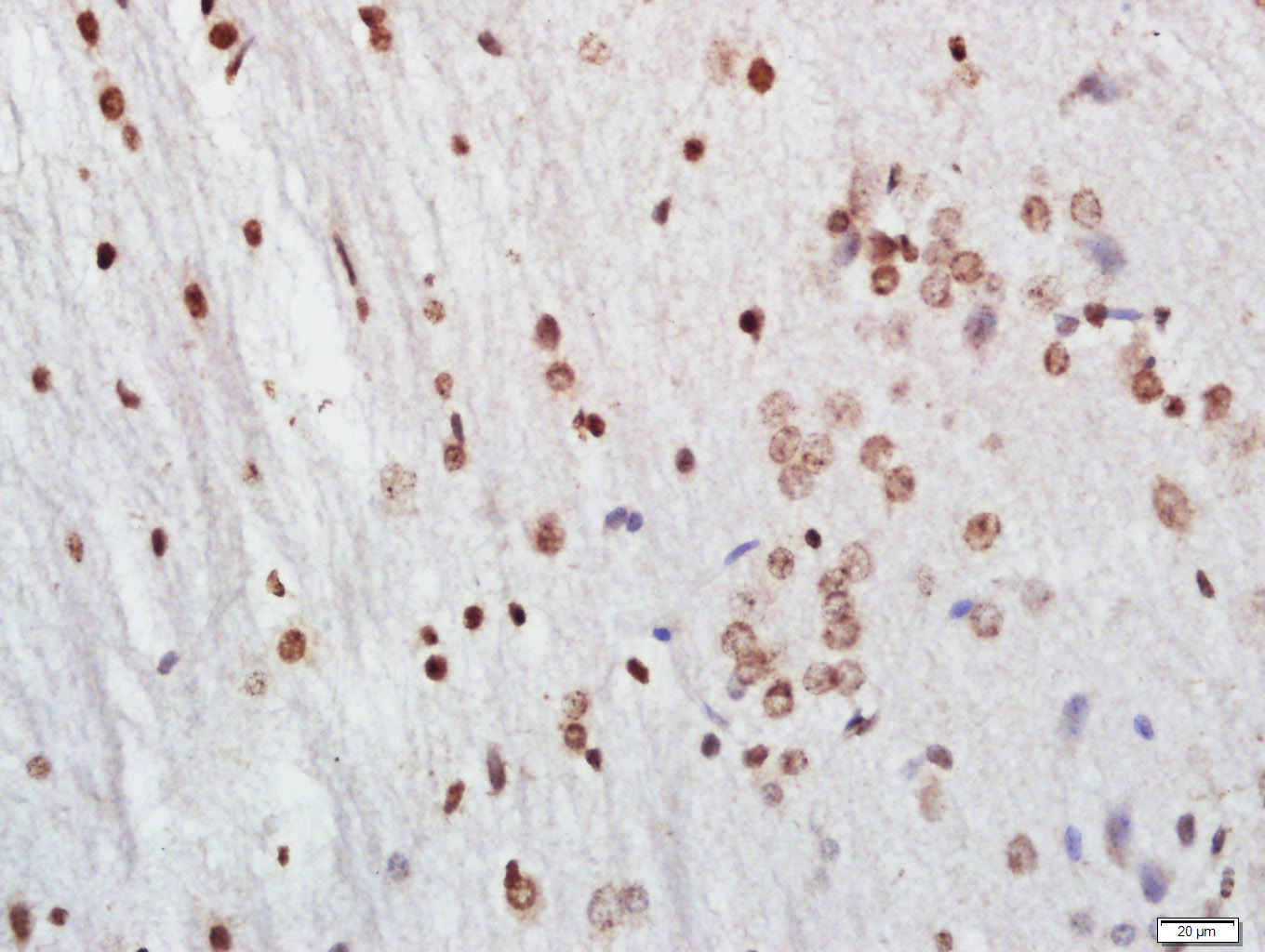
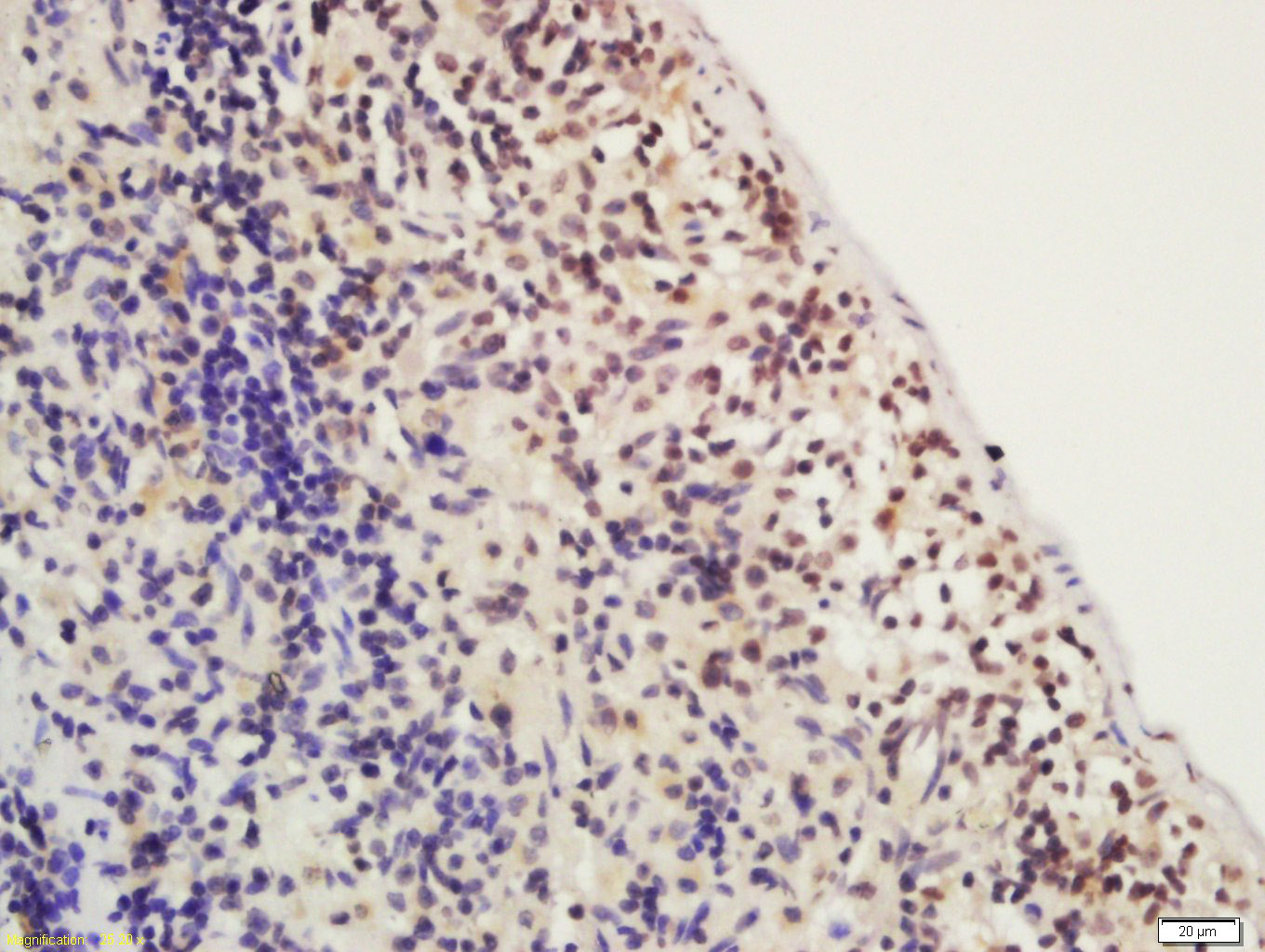
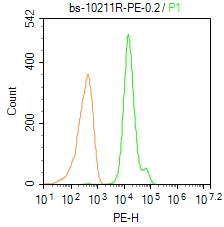
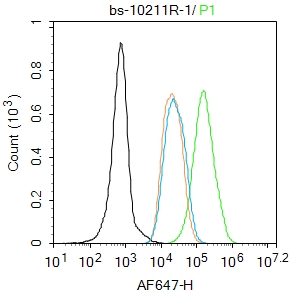
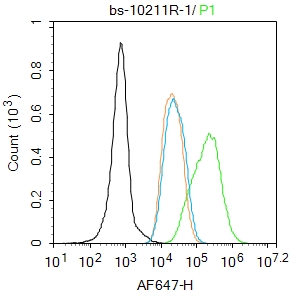
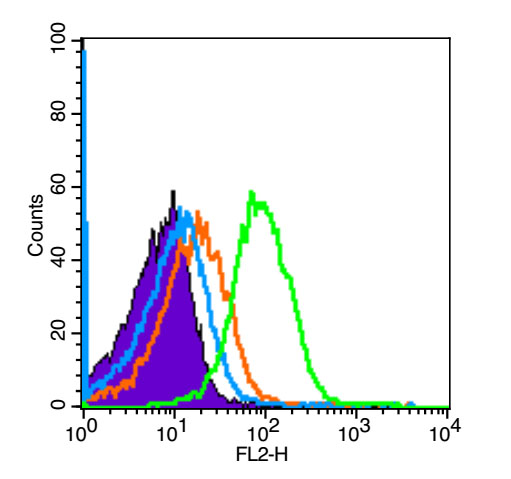


 +86 571 56623320
+86 571 56623320




